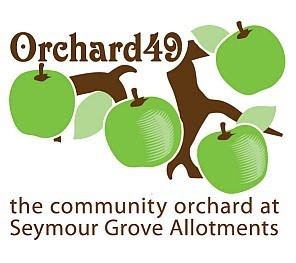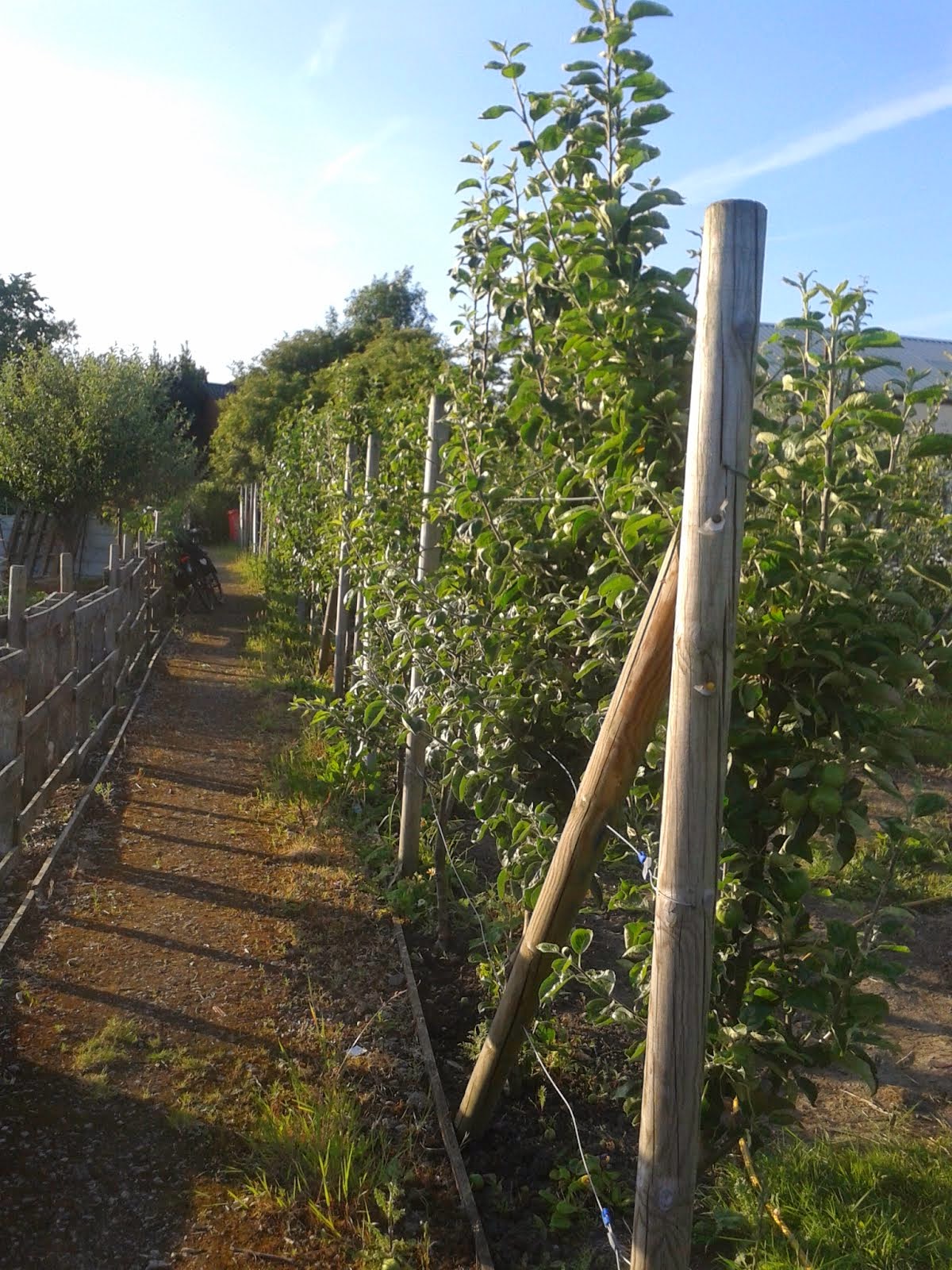The idea of creating an orchard from scratch is interesting, but the more I learn the less practical an option it seems to be. Last Monday I cycled down to Timperley to meet up with Mary Eastwood, who has been growing fruit trees for decades. Mary keeps rootstock plans on her allotment and propagates trees using this home grown rootstock. She kindly volunteered to show me how to graft. We spent a morning in her living room (as there were 50 mile an hour winds outside) with me practising the art of grafting on various twigs from the Beech Drive community orchard.
So why doesn't it seem practical to create an orchard from scratch? Well, the main issue is relying on amateur grafted trees as the basis for an orchard... it takes two years to reach the point where a grafted tree is ready to be planted out (as a maiden) and then opinions differ about how long you should leave a tree to develop before allowing it to fruit (some say up to seven years!). What a waste of time and effort if part way through this process the tree dies, or the graft fails? You have to start again.
The other key issue is space. Once grafted, to stand the best chance each tree needs to be planted in the open (i.e. not in a pot) with between 2-3 feet between trees so that they can grow on. On a small allotment this is a good deal of space to give up! The orchard site itself is not yet ready to be used - a thorough digging over would be needed to get an area ready to plant the grafted trees, and the grafting needs to happen now.
So ... my thinking now is that we need to buy some trees to plant between Nov-January 2009/2010 and also graft some of our own as well. These can be added to the orchard if they are healthy, or we can offer them for sale to raise funds for the allotment society - if we have enough to do this. It may not be possible to squeeze in any grafting this year, but we will certainly do some next year. Better get busy writing a funding bid ...
Developing an orchard from scratch
What do we mean when we say we want to develop an orchard from scratch? Well, instead of buying trees from a nursery this way involves obtaining rootstock and grafting the variety of tree you want to grow onto the rootstock. Rootstock is used to control the size of a tree. You can buy apple trees suitable for growing in a container that will only develop a small rootball (e.g. M27) or you can grow a tree that will stand 15 feet high (M25).
Establishing an orchard this way is a slower process, but if you have limited funds its a cheaper way of doing it. Another bonus is that it develops new skills - how to graft. Another aspect of this is actually growing rootstock itself. Until recently, I was completely ignorant of this aspect of tree fruit horticulture. There are places around the country that grow rootstock and sell it to people who want to graft to make new trees.
Why then not have a try at doing this ourselves? Our allotment society holds plant sales to raise funds for our site, so if we can learn how to grow rootstock, and graft to make new trees we can then sell these to raise money for the site. The other advantage of adopting this approach is that we can create new trees from existing healthy vigourous trees on our allotment site. Hopefully this will lead to fruit trees that are well suited to the local conditions.
There is a small window in the year when grafting can take place, when the sap starts to rise - this is the time to graft. Its weather dependent but happens late March to early April, generally speaking.
If you want to learn more about rootstock, the different types and what they are suitable for visit the Trees For Life Website for more information.
Establishing an orchard this way is a slower process, but if you have limited funds its a cheaper way of doing it. Another bonus is that it develops new skills - how to graft. Another aspect of this is actually growing rootstock itself. Until recently, I was completely ignorant of this aspect of tree fruit horticulture. There are places around the country that grow rootstock and sell it to people who want to graft to make new trees.
Why then not have a try at doing this ourselves? Our allotment society holds plant sales to raise funds for our site, so if we can learn how to grow rootstock, and graft to make new trees we can then sell these to raise money for the site. The other advantage of adopting this approach is that we can create new trees from existing healthy vigourous trees on our allotment site. Hopefully this will lead to fruit trees that are well suited to the local conditions.
There is a small window in the year when grafting can take place, when the sap starts to rise - this is the time to graft. Its weather dependent but happens late March to early April, generally speaking.
If you want to learn more about rootstock, the different types and what they are suitable for visit the Trees For Life Website for more information.
Beginnings
In 2008 Old Trafford Amateur Gardeners' Society (OTAGS) committee decided to adopt a hard to let plot on its site in Old Trafford. This plot, number 49, had not been properly cultivated since 1995 so it seemed a good idea to develop the plot into a community orchard.
We have lots of ideas about how to do this, including growing trees from scratch, by grafting onto rootstock using scions from other established community orchards in the area. We feel this will be an interesting approach, rather than buying them from nurseries and thought that it would be interesting to record this process and share it using a blog.
We hope to submit a bid for Local Food Funding to enable us to buy equipment for the orchard and the site (e.g. an apple press to make the most of all the apples already being grown on the allotments) and to run some workshops (e.g. a grafting workshop next year).
We have lots of ideas about how to do this, including growing trees from scratch, by grafting onto rootstock using scions from other established community orchards in the area. We feel this will be an interesting approach, rather than buying them from nurseries and thought that it would be interesting to record this process and share it using a blog.
We hope to submit a bid for Local Food Funding to enable us to buy equipment for the orchard and the site (e.g. an apple press to make the most of all the apples already being grown on the allotments) and to run some workshops (e.g. a grafting workshop next year).
Subscribe to:
Posts (Atom)




